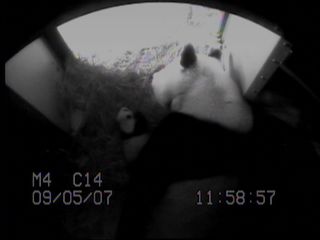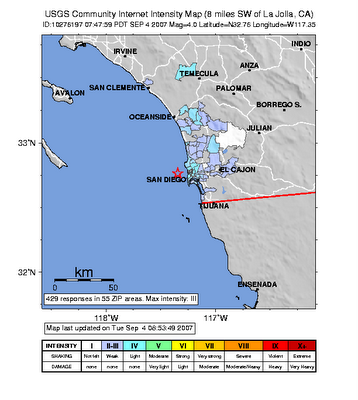
This morning, as I polished off my third bottle of coffee creamer this month, the question occurred to me - not the question that ought to have occurred to me, namely why do I drink so much coffee? - but what are all those mysterious symbols and numbers stamped on the bottom of plastic bottles, what do they even mean? Even though all of my carefully sorted recyclables wind up in the exact same place (in an 'outdoor living person's' shopping cart. It's a....uh....unique recycling system we have implemented here in OB.)
First of all, recycling plastic is much more difficult than recycling glass or paper. Here's
the totally-readable Wiki-version, but why go there when I give you the Pandodyssey(tm)-diluted-age-7-&-up-version?? Basically, there's a million different ways of manufacturing plastic bottles. All these bottles vary in chemical composition and not all of these compositions will meld together nicely upon recycling. Even the dye used to make green Sprite bottles (as opposed to clear Coke bottles) affects the bottle's recyclability chemistry. (I obviously just made that word up. (tm) if it's a good one.)
Thus, plastics can generally only be recycled with their similarly chemically-compounded brethren. This poses a problem for sorting, all done by you, the consumer of course. If YOU want to do your part to help the environment, you better hire an accountant to handle the Pythagorean Theorem on Recycling, better known as all those cryptic numbers purportedly trying to make sense of the mess.
eHow shows us how:
Step 1: Figure out who collects your trash. Ask them what recycling they even accept. Seriously. Or, stand there and cry as you watch the trash collectors mercilessly toss your meticulously rinsed and sorted recyclables 1, 2, 3, and 4 into the back of the garbage truck. With an evil laugh. Ha, no just kidding. They feel your pain.
Step 2: Sort it all by number. Yes ALL of it. They say this is necessary to prevent contamination of plastics. So...get started. Go on, I'll wait. (hmmmmm hmmmmm hmmmmm...elevator music....sun sets....sun rises...)
Step 3: Huzzah, Recycle! Type 1 - PETE and Type 2 - HDPE, are curb-recyclable, meaning most collection companies will pick this up, along with your trash, glass and newspaper. Type 1 and 2 are your regular soda bottles, water bottles, milk jugs, etc.
Step 4: Huh? Here's where it starts to get dicey. Plastic grocery bags are usually marked Type 4 - LDPE, but can also be Type 2 - HDPE. But are sometimes unmarked just to keep things interesting. You can recycle these at your grocery store, or repurpose them for another use. One of your neighbors probably needs some poo bags - go offer. Just don't throw them away. Marine animals inadvertently eat them and die and you don't need the death of a 20,000 pound whale on your conscience. Not today anyway.
Another wrinkle: sometimes Type 2 and Type 4 plastic grocery bags can be recycled together, but sometimes not. Confused? Yeah, me too. Moving on...
Step 5: Expanded Poly-what? If you're the lucky holder of Type 6 - EPS, oooh, you're in luck! You get to call or visit the website of the Alliance of Foam Packaging Recyclers, to find out what to do with your Type 6 goodies. Unfortunately, all too often this extra effort will translate into: Type 6 = trash bin.
Step 6: But I thought we were supposed to be recycling? Gather up your Type 3s (plastic food wraps), your Type 5s (yogurt containers, diapers) and your Type 7s (layered/mixed plastics) and ... THROW THEM AWAY. Why? Because technology has not yet found a way to recycle
these plastics. Something about the dried crusty yogurt molecules contaminating the dirty-diaper-compounds... So why are we still using these containers? Good question. Ask your accountant.
Step 7: For real? Take any tops of spray bottles or caps to bottles and THROW THEM AWAY. Modern science can't figure out what to do with these either so, away they go.
That's it! That is the comprehensive guide on how to recycle household plastics. Not as easy as I had hoped, for sure. Through this exercise I have learned that just because a plastic bottle has a number and little recycled-arrow-triangle on it, doesn't actually mean it can be recycled, or that it can be recycled in my particular neighborhood, or that the onus is on anyone but me to get these bottles and cans to their most environmentally safe final resting spot.
Labels: environment, plastic recycling










